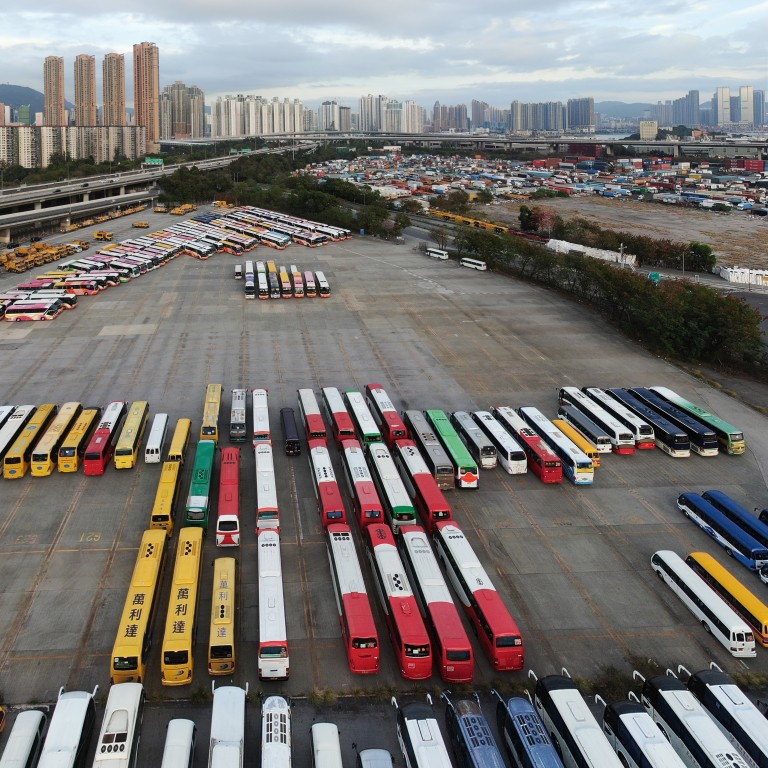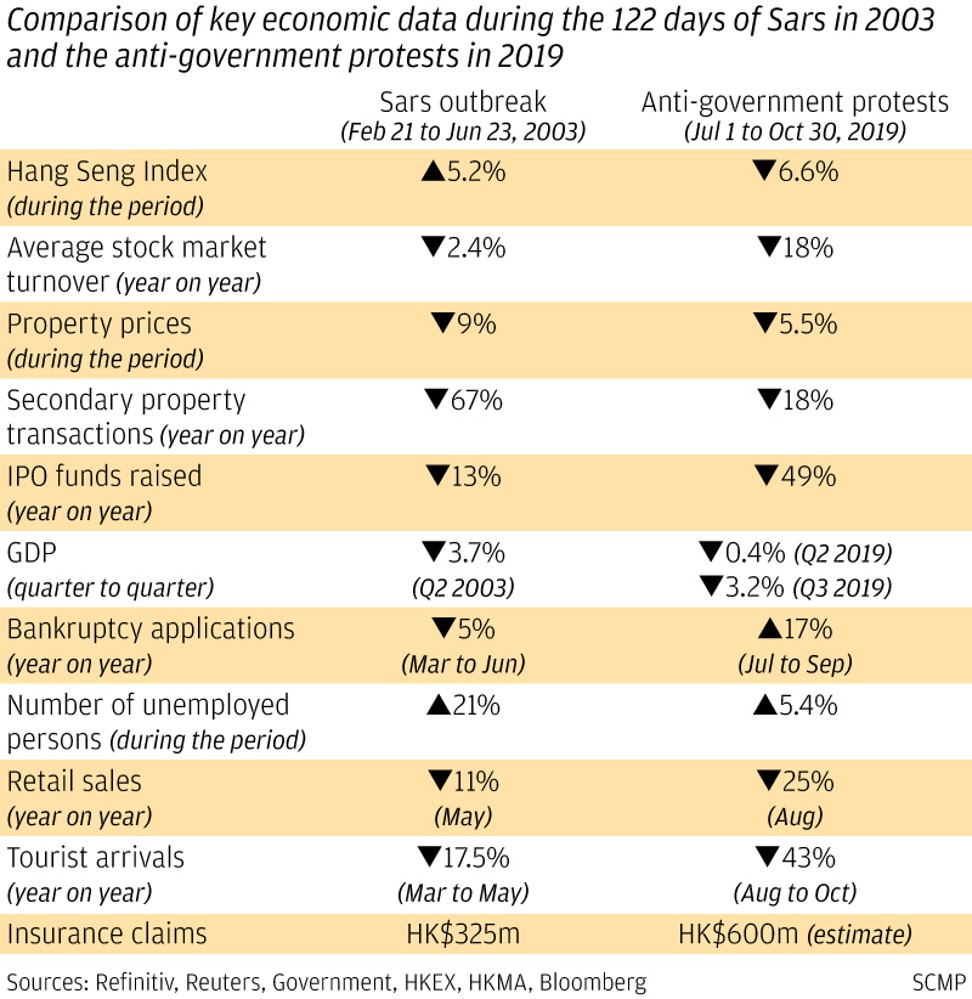
Coronavirus outbreak delivers a one-two punch to the world’s economy, handing out supply and demand shocks one after another
- The coronavirus outbreak is hammering the capacity to produce goods as swathes of Chinese factories remain shut and workers are housebound
- With the virus spreading globally, increasingly worried consumers everywhere are reluctant to shop, travel or eat out
The coronavirus is delivering a one-two punch to the world economy, laying it low for months to come and forcing investors to reprice equities and bonds to account for lower company earnings.
That supply shock was initially viewed as a short-term disruption, easily reversed once the virus was brought under control. Hence the initial predictions that global growth would follow a V-shaped trajectory, sliding in the first quarter and rebounding in subsequent weeks.
Those early bets for 2020 are now in tatters because demand is slumping too. With the virus no longer contained to China, increasingly worried consumers everywhere are reluctant to shop, travel or eat out. As a result, companies are likely not only to send workers home, but to cease hiring or investing – worsening the hit to spending.

How the two shocks will reverberate has sparked some debate among economists, with Harvard University Professor Kenneth Rogoff writing this week that a 1970s style supply-shortage-induced inflation jolt can’t be ruled out. The bottom line for central banks and governments is that there’s likely to be even more pressure to deliver economic fixes.
“A classic recession involves a shortfall of demand relative to supply,” said David Wilcox, a former Federal Reserve official now at the Peterson Institute for International Economics. “In that more ordinary situation, economic policymakers know how to help fill in the missing demand. But this case is more complicated because it involves negative hits to both supply and demand.”

The supply-cum-demand blows explain why the world economy is sliding toward its weakest expansion since the 2009 recession, with policymakers’ inflation targets becoming all the more unreachable. Companies including Hyatt Hotels and United Airlines Holdings have withdrawn their earnings outlooks, while manufacturers from Samsung Electronics to Toyota Motor are battling to get production back online.
Those body blows explain why the Federal Reserve’s biggest cut to interest rates since 2008, in an emergency move Tuesday, initially failed to spur the equity market. Rogoff’s warning on product shortages notwithstanding, traders are now pricing inflation over the coming 10 years at just 1.48 per cent, down from 1.80 per cent at the start of 2020, Treasury securities show.

In the US, the House of Representatives passed a US$7.8 billion emergency-spending bill to fund a response to the outbreak – helping deliver a rebound in stocks lacking in the immediate aftermath of the Fed.
“We’re only in the early innings of this crisis,” said former US Treasury Secretary Lawrence Summers.
Some economists argue that what’s happened is mostly a supply side shock, others have highlighted the wallop to demand as well, to the degree that the distinction matters.
Supply shocks are inherently tougher for policymakers to address, because of the difficulty of quickly restoring the production, transport or communication networks or natural-resource inputs affected by the surprise hit.
They most often involve fiscal authorities, who have up to now taken the back seat, leaving central bankers at the wheel. The US, Japan, Italy and South Korea are among those that have moved to assemble packages to address the virus, though in most cases they’re tied to the health care industry and treatment and prevention specifically, not the broader economy.

“Certainly, rate cuts will not help restock emptying grocery shelves,” said Seema Shah, chief strategist at Principal Global Investors. “Monetary policy is hopeless when supply simply cannot feed demand,” she said.
On the demand side, where central bankers are the natural first-responders, the nature of the shock this time can make a broad-brush monetary response less effective. While lower borrowing costs can help give households greater spending power, that aid is limited if millions are shut up at home due to antivirus measures – or simply because of fears of catching the disease.
The Fed too may need to get more expansive in its moves, Credit Suisse Group AG analysts argue. Zoltan Pozsar and James Sweeney said Tuesday that disruptions to the global supply chain could in turn cause payment failures, tightening financial conditions.
“The supply chain is a payment chain in reverse,” the duo wrote. They urged “open-ended liquidity support through its balance sheet.”
Last week saw the deepest slide in global equities since the credit crisis, a rapid turnaround from the record high of the MSCI All Country World Index just as recently as February 12. It remains about 8 per cent down on that peak after a 2.7 per cent gain Wednesday, spurred by the US spending move along with relief among some investors that the moderate Democratic candidate for president, Joe Biden, did well in the Super Tuesday primaries. Still, the risk remains of further market disruptions.
“While the Fed’s insurance cuts did serve its purpose into late 2019, the continued lowering of rates may have limited support for markets at present,” said Pan Jingyi, market strategist at IG Asia Pte in Singapore.
It all puts the onus on policymakers to contemplate greater inventiveness. Government spending may not be able to contain the virus spread, but it can help replace free-falling consumer demand. Chetan Ahya, chief economist at Morgan Stanley projects fiscal deficits for the four major advanced economies plus China to rise to at least 4.7 per cent of gross domestic product this year, the most since 2011 and up from 4.1 per cent last year.
“COVID-19 is a particularly pernicious economic shock, as it is both a supply and demand-side shock,” said Mark Zandi, chief economist for Moody’s Analytic.


